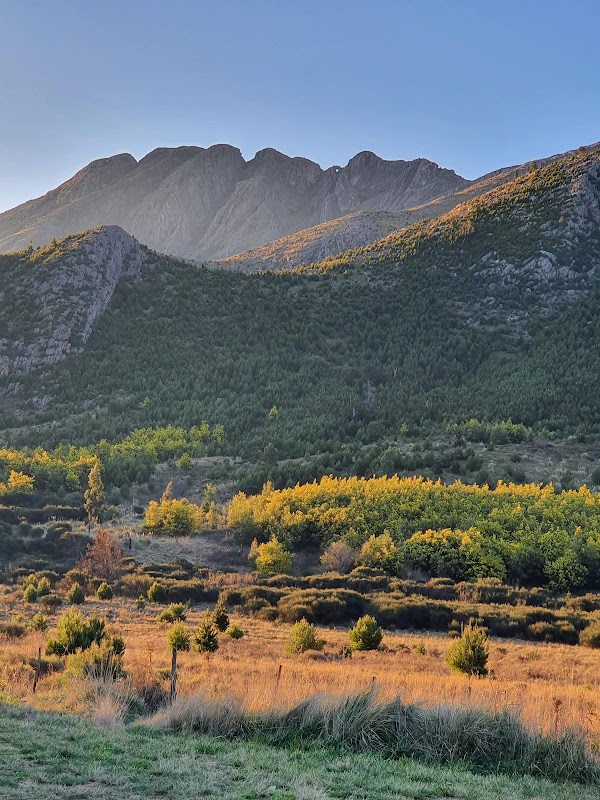
Challenging Trails and Sweeping Views: Mountain Running Races in Sierra de La Ventana
Mountain running races in Sierra de La Ventana offer athletes a rugged challenge with trails ranging 15–35 kilometers and steep elevation gains. From rocky ascents to shaded forest paths, this adventure-packed region combines technical terrain with sweeping views that invite runners of all levels.
Choose Footwear with Aggressive Grip
Select trail running shoes with strong tread to handle rocky, uneven terrain and slippery moss commonly found in the Sierra trails.
Hydrate Constantly
Carry a hydration pack or bottles; the dry winds and elevation gain increase dehydration risk during runs.
Start Early
Plan race starts or runs in the early morning to avoid midday heat and fluctuating temperatures.
Be Prepared for Rapid Weather Changes
Pack lightweight layers; temperatures can shift quickly from chilly mornings to warm afternoons.
Challenging Trails and Sweeping Views: Mountain Running Races in Sierra de La Ventana
If you're looking to test your endurance against rugged terrain far from the urban sprawl of Buenos Aires, Sierra de La Ventana offers an enticing stage. This mountainous region, in the Buenos Aires Province, hosts mountain running races that combine steep climbs, technical trails, and breathtaking panoramas. The course routes often range from 15 to 35 kilometers, with elevation gains of 700 to 1,200 meters, challenging even seasoned runners. Terrain varies: expect a mix of rocky paths, forested sections where trees lean over the trail like quiet guardians, and open ridgelines that demand respect for their exposure.
Running here means partnering with a landscape that is fiercely itself—wind gusts that can suddenly push against your rhythm, rivers daring you to cross carefully, and jagged peaks standing watch. Races typically wind through the Parque Provincial Ernesto Tornquist, using trails carved through the foothills that reveal sweeping views of the valley below and distant pampas.
Practical preparation starts with solid footwear featuring aggressive tread to manage loose stones and occasional slippery moss. Hydration packs are vital—the climbs dehydrate quickly in the dry wind that sweeps through the region, especially in mid-season. Early morning start times are common to avoid the peak heat, and runners are advised to pack layers as temperatures can swing from cool dawn to steamy midday.
Whether you’re a casual trail runner or ready to push into more serious mountain conditioning, the Sierra de La Ventana races offer a dynamic experience. Brief rest points at small yet scenic streams provide moments to refresh, listen to the wind in the scrub, and recalibrate. The surrounding flora—low bushes fragrant with wild herbs, flowering cacti in season—seems to watch attentively, affirming the unyielding pace of the race.
Beyond the competition, exploring the network of trails during quieter days rewards with unexpected wildlife sightings—small foxes slipping through underbrush and a variety of bird calls threading the silence. For those travelling here, staying in the nearby town of Sierra de La Ventana provides convenient access to race circuits, local gear shops, and eateries offering hearty Argentine fare, essential to recovery.
Preparing for these races means respecting the landscape’s stern demands while embracing the clear air and vast horizons. The combination of physical challenge and raw natural beauty makes every step rewarding, every summit a statement of balance between effort and endurance.
Nearby Trips
All Adventures
Boat Charters
Water Activities
Adventures near Sierra de La Ventana, Buenos Aires Province
Discover the unique and memorable adventures that make Sierra de La Ventana, Buenos Aires Province special.
Frequently Asked Questions
Are the mountain running races suitable for beginners?
While some race distances and terrain sections are manageable for fit beginners, most races in Sierra de La Ventana are classified as challenging due to steep climbs and technical trails. Novices should prepare with local shorter trails and build endurance first.
What wildlife might I encounter along the running trails?
The region hosts species such as the South American gray fox, armadillos, and a variety of birds including hawks and woodpeckers. Early mornings increase chances of wildlife sightings as animals retreat during the heat.
Are there water sources along the race routes?
Natural streams dot parts of the trails, but runners should not depend on these for hydration as flow varies seasonally. Carry sufficient water throughout, especially in summer.
How accessible is Sierra de La Ventana for race participants?
The town of Sierra de La Ventana is the closest hub, offering accommodations, local dining, and gear shops. It’s accessible via road from Bahía Blanca and other major cities, making logistics manageable for competitors.
What are some lesser-known viewpoints on the race trails?
Beyond popular summits like Cerro Ventana, look for Mirador del Hinojo—a quieter spot perched mid-course offering a broad view of the forest canopy and distant valleys, less trafficked but rewarding.
Are these races environmentally regulated to minimize trail damage?
Yes, race organizers coordinate with Parque Provincial Ernesto Tornquist authorities to limit participant numbers and enforce leave-no-trace policies, protecting the fragile mountain ecosystems.
Recommended Gear
Trail running shoes with strong tread
Crucial for maintaining traction on rocky and occasionally slippery terrain throughout all seasons.
Hydration pack or water bottles
Ensures constant hydration in dry, windy conditions that increase fluid loss.
Lightweight breathable layers
Protects against temperature swings—cool mornings and warm afternoons.
Cap and sunscreen
Protects from intense sun exposure during exposed climbs.
Local Insights
Hidden Gems
- "Mirador del Hinojo - a secluded vantage point with panoramic valley views"
- "The small waterfalls along the Arroyo Sauce cut - refreshing spots often missed by racers"
Wildlife
- "South American gray fox"
- "Crested caracara"
- "Armadillos"
History
"The area holds cultural importance from the indigenous Puelches people along with stories tied to early frontier settlements and mountain exploration."
